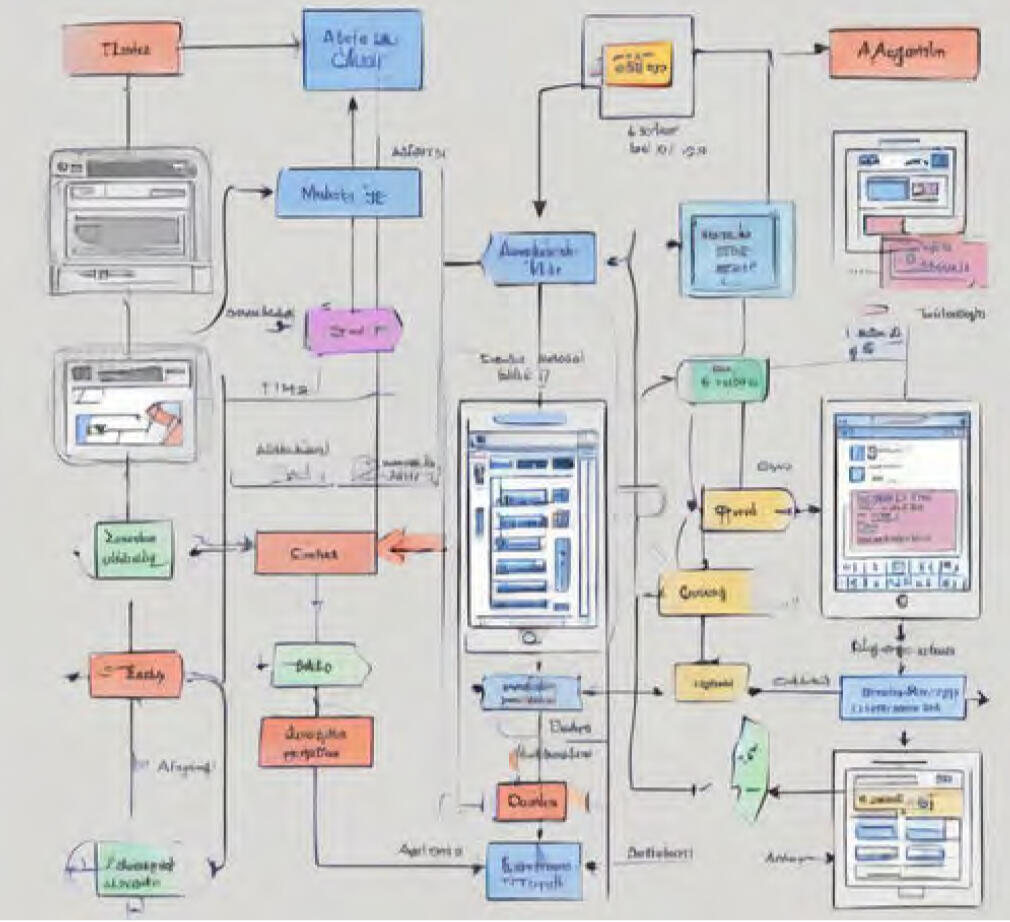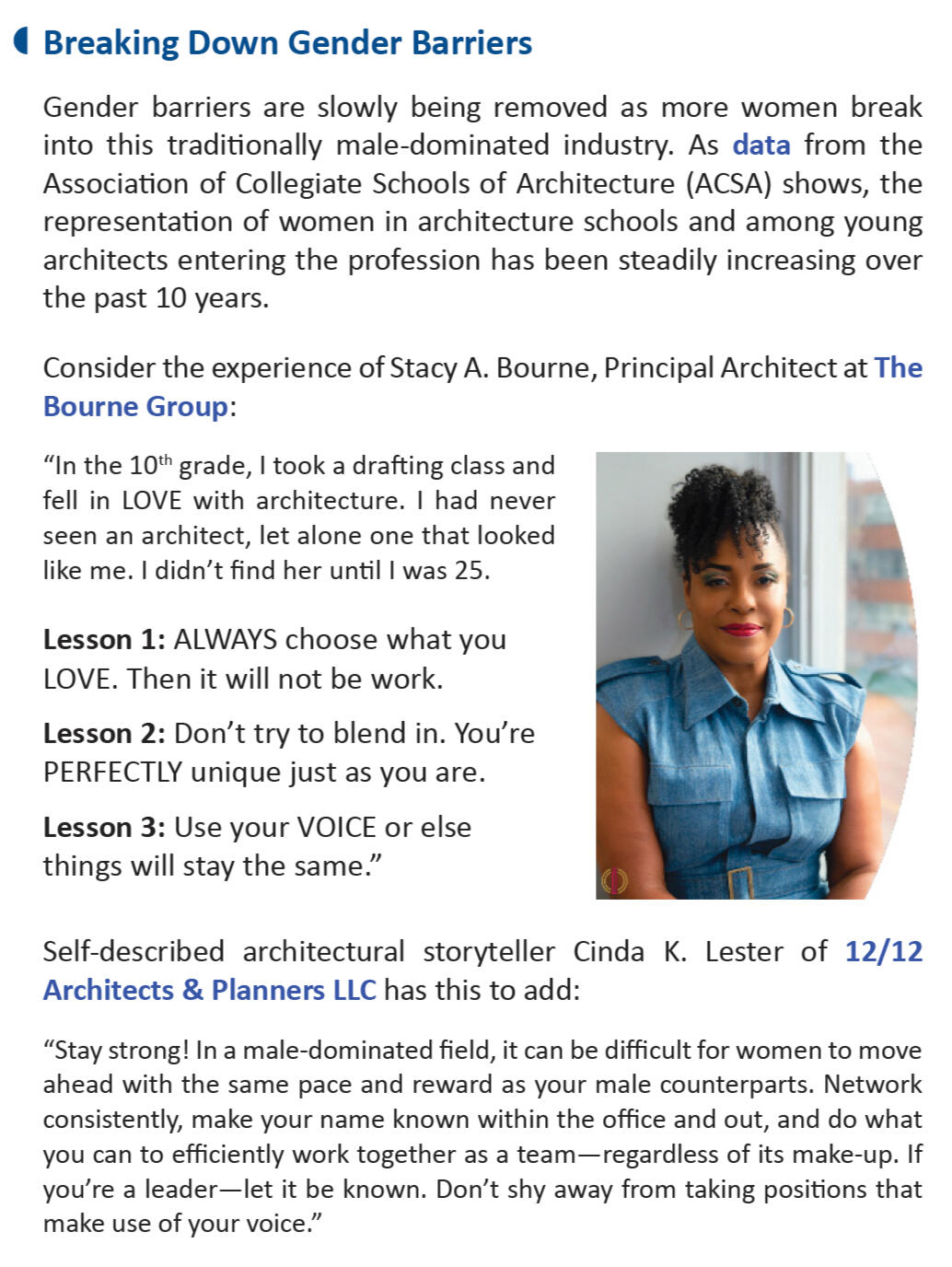proofready
Elevate Your Writing
Tailored editorial services to help refine your content while amplifying your unique voice.
Writing - Editing - Proofreading - Translation (FR-EN)
CONTACT US TO DISCUSS:
Find us on Bluesky
SAMPLES (EXCERPTS)
SAMPLE 1 Title: Artificial Intelligence
Publisher: IAP Career CollegeAI Models
AI models are computer programs designed to replicate and augment various aspects of human intelligence. These models encompass a wide range of sophisticated tools and algorithms that can process and analyze input data to perform different tasks.Rule-based / Knowledge-based Models vs. Machine Learning (ML) ModelsAI models can be broadly categorized based on their underlying approach and capabilities:
1. Rule-based or knowledge-based models, which rely on predefined rules, logic, and knowledge bases manually curated by human experts to reason and solve problems. They follow an explicit set of instructions and conditions to arrive at outputs or decisions.
2. Machine Learning (ML) models, which are trained on data to automatically identify patterns and relationships. Instead of being explicitly programmed with rules, they use algorithms to learn from examples and make data-driven predictions or decisions.Each category of model has its strengths and applications. Rule-based models allow encoding of human expertise into systems, but can be rigid and limited by their predefined rules. ML models are more flexible, can adapt to new data, and can discover complex patterns that may be difficult for humans to manually specify. We will look at each of these types of AI models in more detail later in this chapter.Non-generative AI Models vs. Generative AI ModelsA distinction can also be made between non-generative AI models and generative ones. Non-generative AI models are designed for specific tasks like classification, prediction, decision-making, or data analysis. They do not generate new content but rather analyze and make decisions or predictions based on existing data.By contrast, generative AI models are capable of generating new content, such as text, images, audio, or other media, by learning patterns and relationships from training data. They can synthesize novel outputs that resemble the data they were trained on.For example, large language models (LLMs) are a specific type of generative AI model focused on natural language processing tasks. They are trained on vast amounts of text data to learn the patterns and relationships in human language. LLMs can then generate human-like text, answer questions, translate between languages, and more.

SAMPLE 2 Title: Become an IT Professional
Publisher: IAP Career CollegeOnboarding
As an IT professional, you might come into a project in different ways depending on your role, expertise, and the organization’s structure:1. Team Member: You might join an existing project team after initiation, focusing on specific technical aspects or deliverables.
2. Project Manager: You could be assigned to lead the project from its inception, and be responsible for guiding the initiation process and subsequent phases.
3. Consultant: You might be brought in to provide expertise either during the initiation phase—helping to assess feasibility or define requirements—or as a specialist in a later stage of the project.When you join a new project as an IT professional, you’ll undergo a process commonly referred to as “onboarding”. This phase ensures that as a new team member, you’re effectively integrated into the project environment and equipped with the necessary knowledge and resources to contribute effectively.The onboarding process typically begins with a comprehensive project introduction, where you’ll be briefed on the project’s purpose, scope, and expected outcomes. This is followed by a detailed review of technical requirements and specifications relevant to the project’s IT components.You’ll then be integrated into the project team, introduced to colleagues, and granted access to essential systems and tools. You’ll receive briefings on the project management methodology being employed and your specific role within that framework. Clear communication of responsibilities, project timelines, and key milestones helps set expectations. You’ll set up your technical environment, participate in knowledge transfer sessions, and receive initial task assignments to begin contributing to the project.The following fictional scenario will give you an idea of what the onboarding process is actually like:A Day in the Life: Onboarding ExperienceMeet Maya, a skilled software developer joining TechWave, a forward-thinking company known for its innovative cloud solutions. On her first day, Maya is greeted by her project manager, Samir, who provides her with an overview of “Project Quantum”, a new secure communication platform the company is developing. Maya spends her morning reviewing the project’s technical documentation, familiarizing herself with the system architecture and software requirements.After lunch, she meets with the development team, including lead developer Priya, who walks her through the team’s Agile workflow and daily stand-up routines. A stand-up is a brief, daily meeting in Agile project management where team members share updates on their progress, discuss challenges, and plan their work for the day (typically held while standing to encourage brevity!)The IT support team then helps Maya set up her development environment, granting her access to TechWave’s collaborative and project management tools, and internal knowledge base. Maya is then invited to a knowledge transfer session where senior developer Ravi explains some of the intricacies of the project and the custom frameworks they’ve developed.By the end of her first week, Maya has her development environment fully configured, has participated in several team meetings, and has been assigned her first set of user stories (see below) to work on. She feels well integrated into the team and ready to contribute to Project Quantum, excited about the challenges and learning opportunities that lie ahead at TechWave.

SAMPLE 3 Title: Architecture
Publisher: IAP Career CollegeDrawing
Drawing in architectural design is a vital tool for communicating and expressing ideas effectively. It allows architects to transmit concepts and plans to clients, project sponsors, collaborators, and other stakeholders more clearly, saves time, and helps to avoid misunderstandings. Both traditional and technical drawing techniques are used by architects to work out and convey their designs. While digital tools are key to this process, hand drawing remains an important skill for architects to acquire.There are 3 major types of architectural drawing:
1. Concept sketches: These are freehand drawings created at the start of the design process to explore initial responses to a brief. They allow for quick and flexible brainstorming to capture the essence of the design idea. They are not intended to be detailed or 100% accurate. Today, while hand-drawn sketches remain valuable, architects are also taught to use digital tools for concept sketching.2. Perspective drawings: This type of drawing is based on the real-life visual perception of distance. Objects placed farther away from the viewer appear to decrease in size at a constant rate, and their lines converge toward one or more vanishing points. Artists and architects leverage this phenomenon in their drawings to create the illusion of depth on a two-dimensional surface. This technique allows them to create realistic impressions of depth and communicate spatial relationships effectively.3. Technical drawings: Traditionally, architects were taught technical drawing skills using manual drafting tools such as T-squares, triangles, and compasses. This involved creating precise and detailed drawings, including plans, elevations, and sections, by hand. However, with the advancement of technology, architects are now also taught computer-aided design (CAD) software for technical drawing, which allows for more efficient and accurate creation of technical drawings.In addition to expanding on the information provided during the programming phase, the schematic design phase involves preparing various types of drawings to launch the architectural design process.These drawings typically include:Bubble diagrams: diagrams that use bubbles or circles to represent different kinds of spaces in a plan
Sketches: simple drawings of the basic design concept for the building or spaces
Section drawings: vertical cut-throughs revealing a building’s interior and exterior profiles
Floor plans: layouts of each floor, showing the arrangement of rooms and spaces
Site plans: representations of the building and its surroundingsBubble Diagrams
A bubble diagram in architecture is a visual tool used to represent spatial relationships and functions. It is a freeform drawing that helps to translate the program’s itemized list of spaces with descriptions into a strategy or form.The diagram uses circles or bubbles to represent the different kinds of spaces in a plan, varying in shape to indicate features of greater or lesser size and importance. These bubbles are joined by lines and arrows, referred to as “connectors”, showing how people in the building can access the various spaces. Together, these elements create a sense of the space, layout, and flow, which is used to develop a more refined plan.Bubble diagrams can be very helpful during the programming phase, and, in fact, they are often only used at that stage. They do not bear any resemblance to the actual design or structure but are typically employed as a kind of brainstorming activity to help you and the client come to an agreement on the major components of a structure and the relative importance of each one.You don’t need any special skills or tools to create a bubble diagram, so even the client can produce one to help articulate their vision. They can be drawn on a piece of paper, on a tablet, or using common office software like Microsoft PowerPoint in a pinch. Dedicated software, such as SmartDraw or Boardmix can also be used to create bubble diagrams.To develop a bubble diagram, follow these 6 steps:
1. Create a list of all the activities that will be carried out in the planned building, along with the related spaces.
2. For each space, specify a probable size (small, medium, or large).
3. Evaluate possible interactions between spaces and indicate their position.
4. Identify the requirements for spaces, such as indoor air quality or lighting (e.g. environments that require direct ventilation or lighting must be positioned at the edge of the diagram).
5. Draw bubbles corresponding to the main spaces of your project, with the correct dimensions and in the right position, to reflect the proportions of the proposed environment while considering interactions with surrounding spaces.
6. Complete the diagram with lines and arrows indicating circulation paths and accesses.Sketches
You will likely already have made some sketches during meetings with your client or to include in your proposal, but these will also be produced as part of the schematic design phase. A sketch is a very rough, preliminary drawing whose purpose is to convey the basic form and style of the proposed architecture. Some of your sketches will focus on the exterior appearance of the building, while others will represent interior spaces, such as individual rooms, hallways, views to the outside, and other features.Sketching involves the ability to see buildings in terms of edges, shapes, and shadows. Important to remember during this practice is the principle of “economy of line”. In a sketch, it is not necessary (or even desirable) to get too bogged down in the details, which are likely to change anyways. The process of sketching should be quick, and if you wish to convey certain elements, such as a color scheme, you can apply them with a rapid wash of color over one area of the drawing using pencil crayons, watercolors, or paints included in the computer application you are using.

SAMPLE 4 Title: MBA Essay Topics: What to Expect
Publisher: BeMo Academic ConsultingWhat Purpose Do MBA Essay Topics Serve?
MBA essay topics are meant to elicit what makes you the perfect candidate for an MBA and for the specific business program you are applying to. Your essay should convince the admissions committee that you have what it takes to be successful in an MBA program, based on personal, academic, and work experience, and that you are the right fit for the class.Whether you are writing an MBA personal statement, a statement of purpose, or another type of essay, your essay should tell the story of the steps you took to end up here.MBA essay topics also highlight the mission, core values, and priorities of the business school. Because business schools are all quite different, tailor your essay to emphasize the curricula and teaching approach that appeal to you in the school’s philosophy of business education and research.A Master of Business Administration is a highly sought-after credential. Admission to this challenging program is competitive, and the application process, like the MBA itself, is demanding. Business schools are seeking leaders, not followers, and the MBA essay is your opportunity to demonstrate how you measure up. The admissions committee will be keen to understand your background and aspirations and how you see yourself fitting in and contributing to the MBA program. Finally, they will be looking for proof of your self-assessment abilities and business acumen.The key to acing MBA essay topics you encounter is to remember that everything you include in the essays must inevitably link back to the questions “Why MBA?” and “What makes you right for our MBA program?”. We will discuss other important themes below, but as an MBA applicant, all your application components must in some way answer these important questions.Example for the University of Chicago Booth School of BusinessPrompt: “How will a Booth MBA help you achieve your immediate and long-term post-MBA career goals?”
Length: 250 words min.Eight years ago, after earning my M.S. in Business Analytics from Franklin University, I partnered with two alumni in a startup venture. TechCapital’s mission is to assess technology needs of companies looking to retrofit their older plants. We act as an intermediary between investors and companies to structure, implement, and manage the retrofitting contract. Our unique business model has proven to be highly successful, and we guarantee significant ROI once operations begin.Columbus, Ohio, has since come to be known as the Midwest’s “tech capital.” Recent investment in startups is booming. We launched three newly retrofitted enterprises, all representative of key industries: advanced manufacturing, logistics, and insurance. Moreover, we have tripled in size and expanded our core departments: consulting, business analytics, and contracting. Sensing that we are at the cusp of real growth, I know the time is right to step up my game.With its reputation for innovation, impactful research, and transformative knowledge, the prestigious Booth Weekend MBA Program is my first choice for fulfilling a lifelong ambition. I certainly fit the profile of a high-potential professional seeking to rise to the next level. The Chicago Approach aligns perfectly with my analytical sensibility, as confirmed by attendance at several Roundtables and Student Panels. I am eager to learn from talented peers and an exceptional faculty. Finally, I look forward to building my professional network and ultimately establishing a second TechCapital in Chicago to share lessons learned and implement the novel, creative, and sustainable business solutions our company has pursued.

SAMPLE 5 Title: Middle Ground
Publisher: CactusCanada is made up of 10 provinces and three territories. Canadian national identity, such that it is, depends on the plurality of identities of which it is comprised – the diversity that has resulted from the mixing of different settlement and migration patterns with distinct geography, industry, and politics. Powers are shared between the federal government and the provinces, and indeed, it is hard to imagine how it could be otherwise, given the considerable differences between regions: the interests of the eastern coastal provinces, for example, have little in common with those of the prairies. Nevertheless, “English Canada” has tended toward a self-concept of hegemony by default, although it has no unified state or set of representative political institutions that adequately regroup all the other identities that make up Canada. According to Angus (2003), “the name does not refer to the origins of its citizens considered individually, but to the language of everyday action and the institutional consequences of this dominance” (p. 25).In the 2006 Census, Canadians were asked to list their ethnic and cultural origins. A majority (59%) of Québec respondents self-identified as Canadian, while 29% self-identified as French. In New Brunswick, 50% of the population identified as Canadian and 27% as French. In Alberta and Manitoba, one quarter of the population identified their origins as English before Canadian. In Saskatchewan, British Columbia, and Yukon, at least half the population identified their ethnic origins to be other than Canadian. In the Northwest Territories and Nunavut, North American Indian and Inuit were the leading categories.The identity of Canada as a whole is thus obscured; it cannot be said to either include or exclude “others,” such as the Québecois or First Nations. Yet this type of assertion is made all the time. Angus (2003) described such a dynamic as “constitutive paradox” – the absence of a hierarchical relationship between identities such that each can become the context or container for the other (p. 1). This resonates, as it comes close to describing my subjective reality of living as a minority within another within a nation within another that I, myself, cannot define.In 1613, an early treaty between the Haudenosaunee and Dutch made use of a wampum shell belt to symbolize agreement between the two cultures. The design of the Two Row Wampum consists of two separate lines of purple wampum shells, symbolizing different vessels (canoe and ship) travelling down the same river, with three lines of white beads between them, representing peace, friendship, and respect. Borrows (2011) explained, “as nations move together side-by-side on the River of Life, they are to avoid overlapping or interfering with one another” (p. 76).Evidently, this metaphorical worldview did not survive the colonization and “civilization” of the continent. Almost immediately, the new world was besieged by European problems – longstanding conflicts that simply moved to a bigger battlefield as soon as leaders recognized the economic value of the place. Yet, for a brief moment, there was what historian Richard White (1991) referred to as “middle ground,” a kind of quasi-neutral territory where each culture did overlap, learning from and contributing to the other’s experience (p. 50). The ability to communicate, either by studying the other’s language or by employing translators and interpreters, would have been key to negotiating middle ground.

SAMPLE 6 Title: A Second Language Proficiency Test
Publisher: Collegial Centre for Educational Materials Development (CCDMD)An Adaptive Test
The SLPT is an online adaptive test that dynamically selects, from a bank of calibrated items, the item most likely to assess the respondent’s skill level in light of their preceding answers.A computerized adaptive test, in comparison with a non-adaptive test, makes it possible to reduce the number of items presented, decrease the test administration time and increase the reliability of skill assessment, according to Linacre (2000) and others. The first question, subsequent questions, order of questions and test conclusion may vary from one student to another.Sodoké (2008) states that, in essence, a good adaptive testing system reproduces the behaviour of an experienced examiner who has significant knowledge of the content to be evaluated, the abilities of the individual respondent, and the questions that are most likely to produce an accurate measure of the respondent’s ability (p. 6).The Framework for the Development of Computerized Adaptive Tests (CAT) proposed by Nathan Thompson and David Weiss (2011) includes 4 main stages:Test content = calibrated item bank + psychometric components:
(1) Starting point
(2) Item selection algorithm
(3) Scoring algorithm
(4) Termination pointAn item is selected for the starting point, the first item in the test, which in the case of the SLPT is generated randomly. The platform then cycles through the next stages: after the item is answered, it will be scored for an estimate of the respondent’s proficiency (θ). The termination criterion (4) is then evaluated; if it is not yet satisfied, another item will be selected (2). Based on the respondent’s answer, their score (θ) is updated (3), and the termination criterion evaluated once more (p. 2).This process is supported by item response theory (IRT), a paradigm through which proficiency level, defined in this context as the level of aptitude, skill or competency of an individual in a given field, can be estimated. In Sodoke’s model (2008), it is accomplished via the administration of a series of test items (questions or tasks) to which it is possible to attach a value for success of 1 and failure 0 (p. 67).Item response theory includes:
- Methods for estimating the respondent’s proficiency level and the parameters of items related to the topic area (level of difficulty, discrimination potential, probability of a correct response through guessing or chance)
- Mathematical functions for calculating the probability of a successful score based on the respondent’s proficiency level and the item parameters
- Techniques for estimating to what extent the data supports the proposed model
- Strategies for analysing the psychometric properties of the test (validity, reliability)
- Strategies for maintaining banks of appropriate test items.The first phase of development of the SLPT involved the design and programming of the platform’s four modules:- The testing module presents the test to the respondents.- The management module provides all the functions required to manage a subscription in an institution. From this module, the manager can create groups, define the testing calendar, and view results, which can be exported to a spreadsheet for statistical analysis or to the institution’s pedagogical platform.- The administration module is intended for the CCDMD resource team, whose role is to administer the platform. The CCDMD administrator can also access each subscriber’s management module to troubleshoot, if required.- The editing module gives the content specialists a set of tools to design and prepare new items that will gradually be added to the bank of items using the platform’s autocalibration function.

2025 © The Author